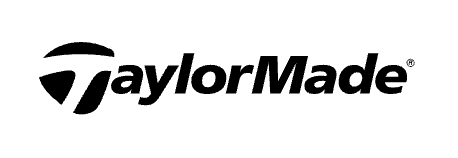Why The Grind Of Your Wedge Matters
The grind can help with a weakness in your short game or accommodate the type of course you play. But what is it, what are the options available and how can they help? We explain all
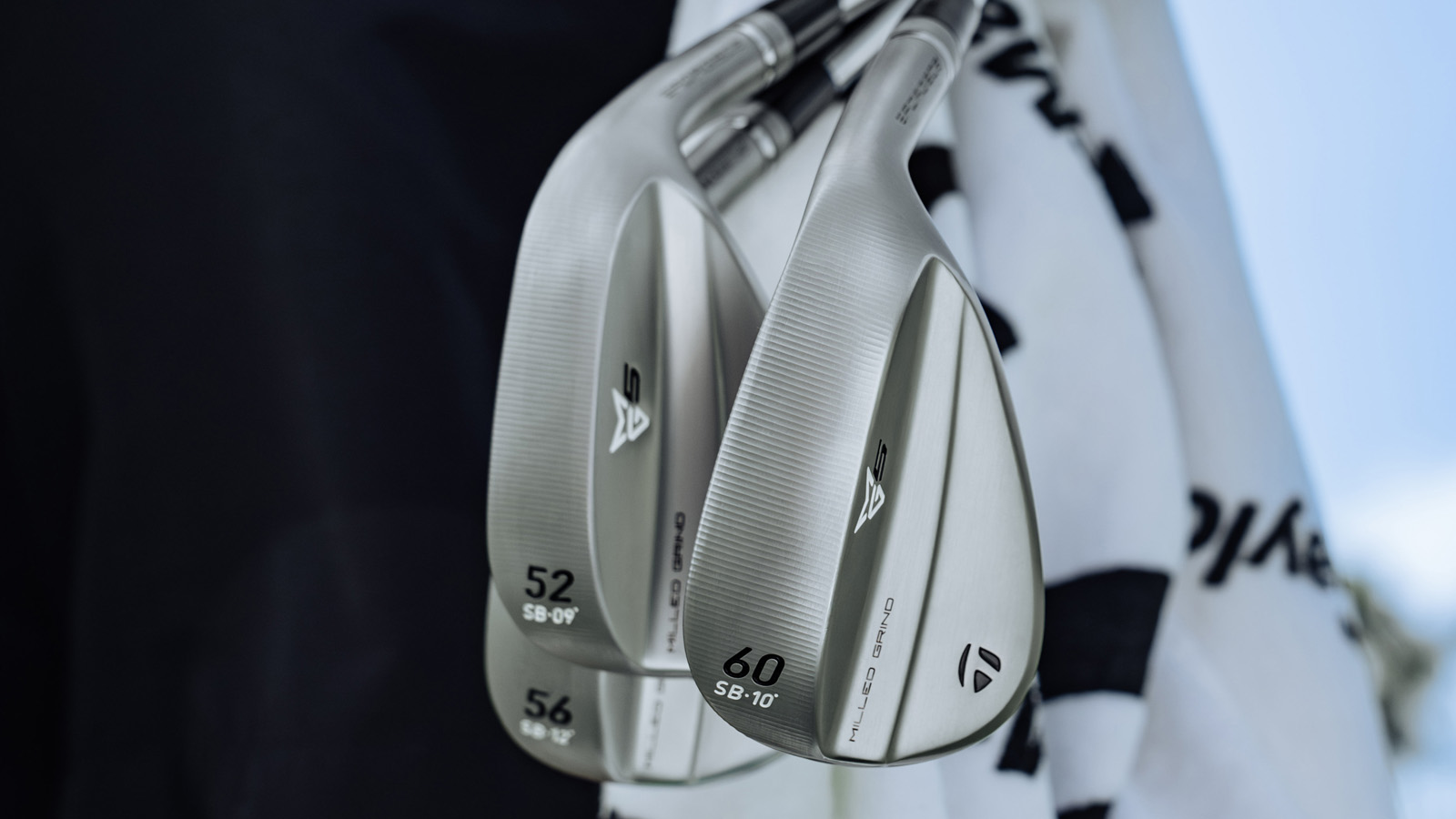

Having the right wedge setup in your bag is crucial to being able to score well on the golf course, whether that’s getting up-and-down for a crucial par save or taking advantage of a good drive with a pinpoint approach shot. While most golfers have a decent understanding of what lofts they need on their wedges, the grind on the sole of a wedge is often overlooked. This is far from advisable, as the grind can have a dramatic effect on how the wedge interacts with the turf and what contact and control you’re likely to get on the ball.
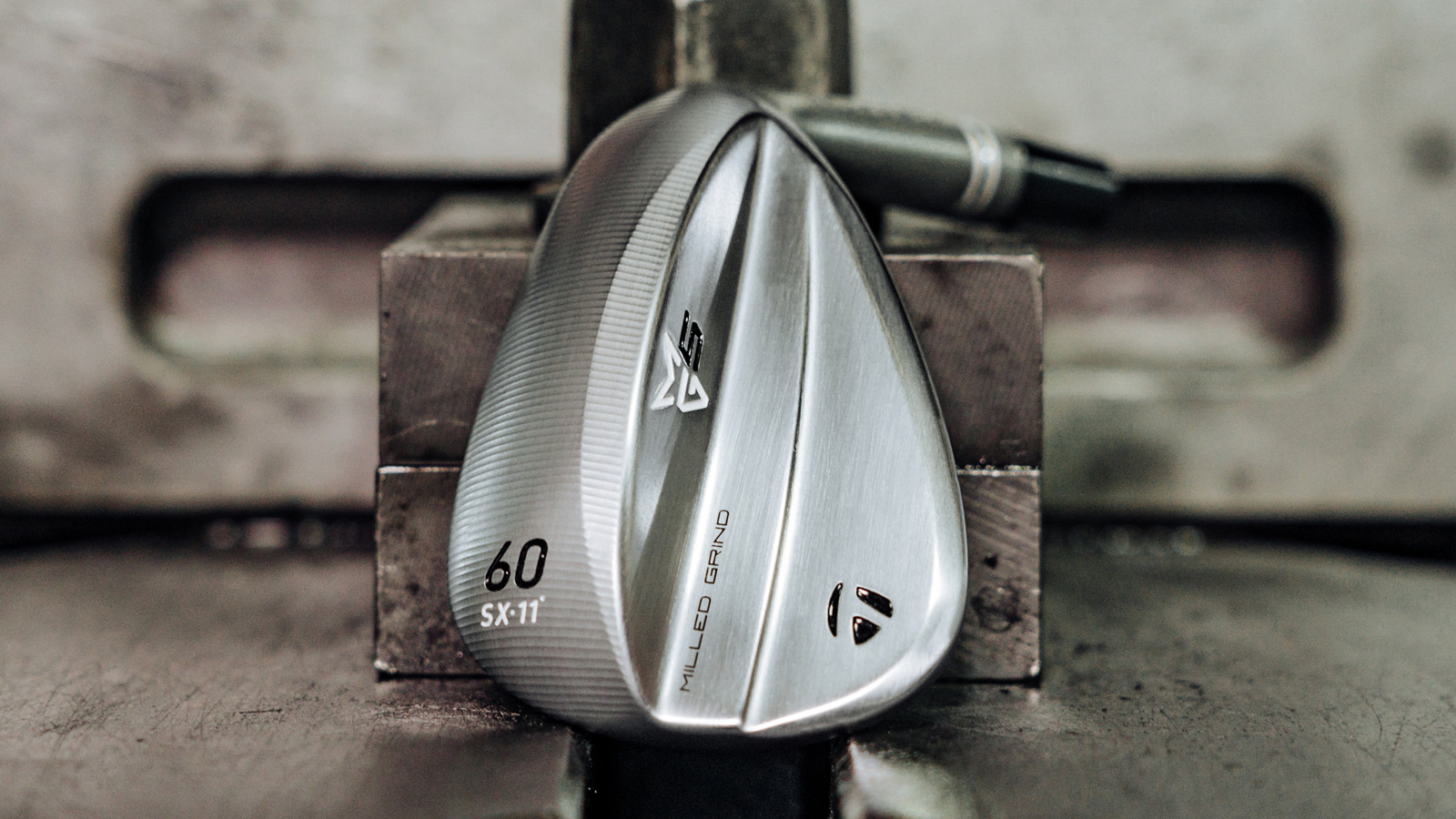
The TaylorMade MG5 wedges are forged and have a milled grind sole to create precise geometries
What Is The Grind On A Wedge?
In simple terms, the grind of the wedge refers to the removal of material or shaping of the sole of the club for it to interact with the turf in different ways through impact. Grinds on wedges are designed to be both more versatile or less versatile, more forgiving or less forgiving, and will suit different golfers depending on multiple factors such as skill level, the angle of attack into the ball, and ground conditions.
Wedges with more heel and toe relief - where material is cleverly removed from these areas - are considered more versatile, meaning the golfer can open and close the face of the club to manipulate the launch and spin of the ball without the leading edge rising too far from the ground.
This then enables the player to slide the club underneath the ball and not bounce off the turf, catching the ball towards the equator and likely facing a similar shot back from the other side of the green!
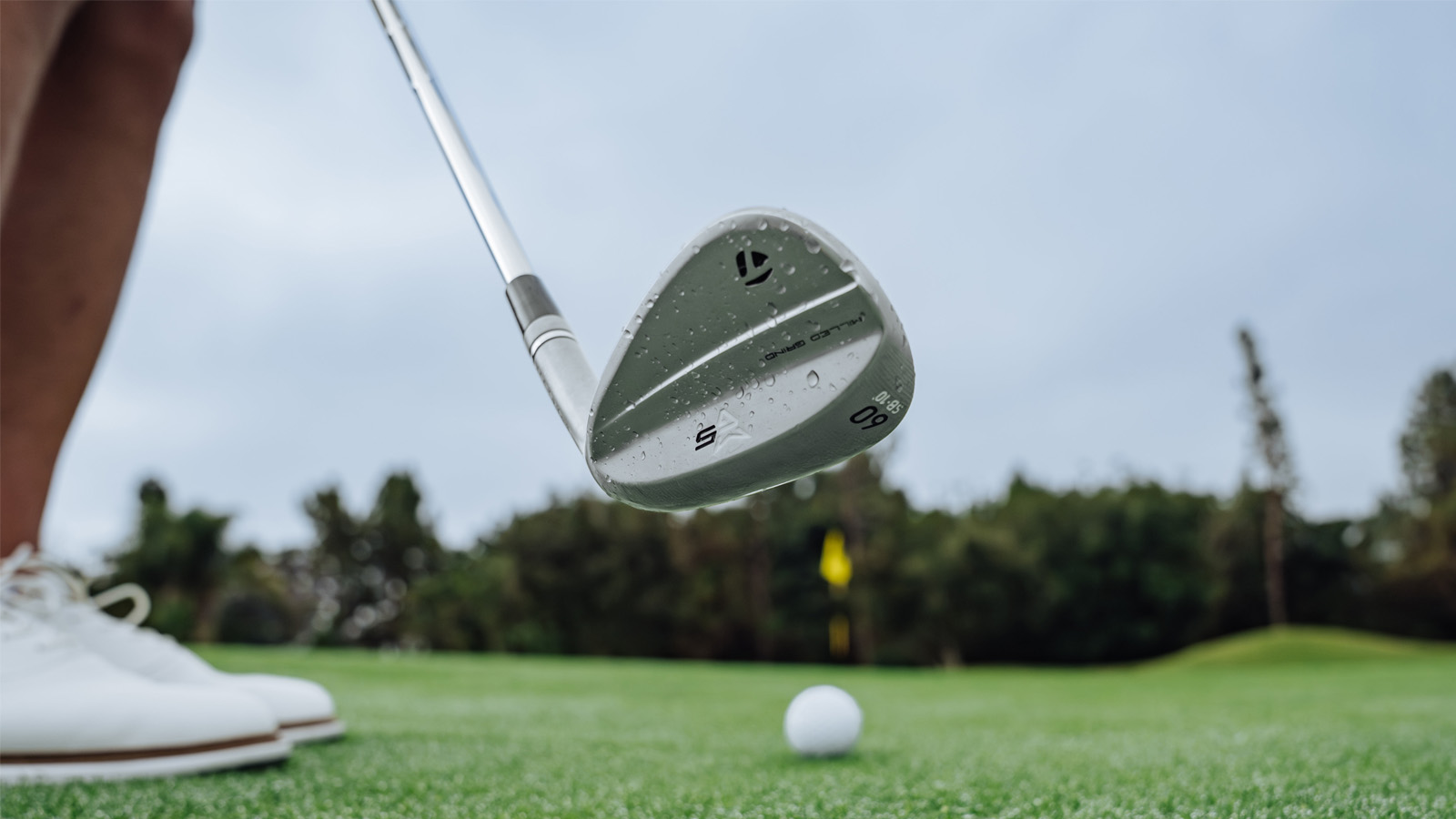
Grinds on wedges can make a huge difference to turf interaction when chipping and pitching
On the flip side, a wedge with a much wider sole and a less pronounced grind will suit golfers who prefer to hit chip and pitch shots with a squarer face or who typically play on softer turf. This will help prevent the leading edge from digging into the ground, causing poor contact with the ball. Players who are generally steeper with their angle of attack will tend to gravitate more towards a wider sole or a sole that offers plenty of bounce, as this will also help see the club exit the turf properly, ensuring the contact with the ball is on the right part of the clubface.
Finding the right grind on your wedges will allow for the best contact. This will enable you to consistently deliver the club into the back of the ball, finding the correct strike location on the face (usually between grooves 2-5), producing a lower flight with maximum spin for complete control. One of the biggest misconceptions in the amateur game is that wedges should fly straight up in the air with a towering ball flight. As much as hitting the ball high can be an advantage in some cases, keeping the ball on a flatter trajectory with more spin will increase control and the ability to hit your landing spot more often.
What grind options are available?
As someone who tests wedges for a living, I’m always curious to hear about what specifications brands offer new wedges and how accommodating they are to all abilities of golfer. The new TaylorMade MG5 wedges are the perfect example of how grinds can be tailored to suit different golfers and ground conditions. Featuring six distinct grinds and multiple loft options within those grinds, the graphic below shows how the R&D team at TaylorMade has removed areas of the sole to achieve different sole shapes, catering for every golfer and on-course situation.
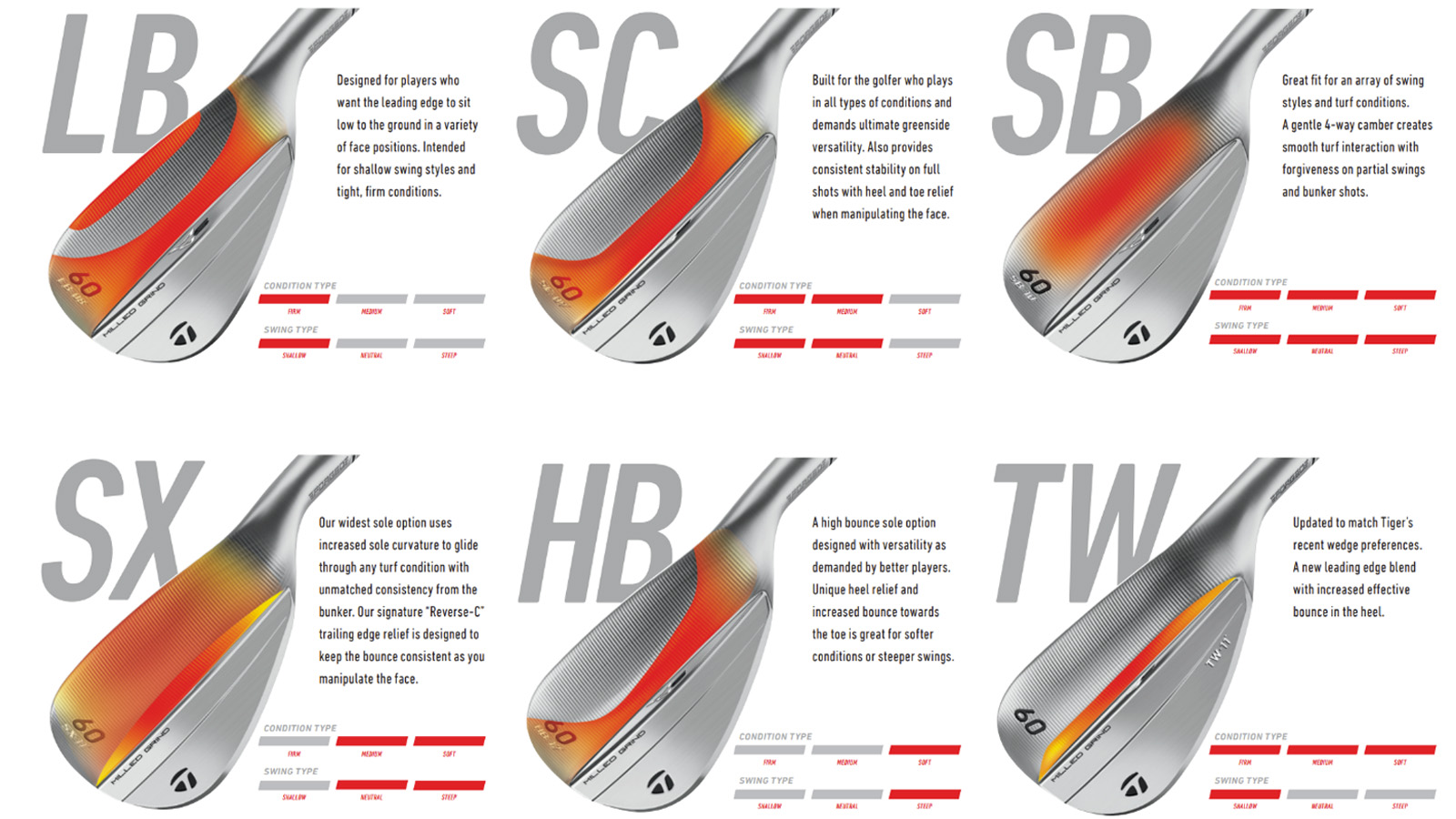
The six TaylorMade MG5 wedge grinds show the variety that is available and how it needs to be a factor when choosing new wedges
Choosing your ideal grind combination
One of the key things to consider when looking at grinds and sole shapes, is being realistic about what you use each of your wedges for when you're on the course. Typically, those that use a gap wedge or 50°/52°, will want a full sole grind with a decent amount of bounce. This means there is little to no relief taken from the sole and it is designed mostly for hitting full shots.
As you move into your sand wedge, think about where you will tend to use this club on the course. Is it more for pitching, do you like turning the toe in a little and need some relief to help that glide through the grass? You may want something that has a little heel and toe relief, so you can open the face up to play bunker shots but has enough bounce that it pop's back out of the turf on longer shots.
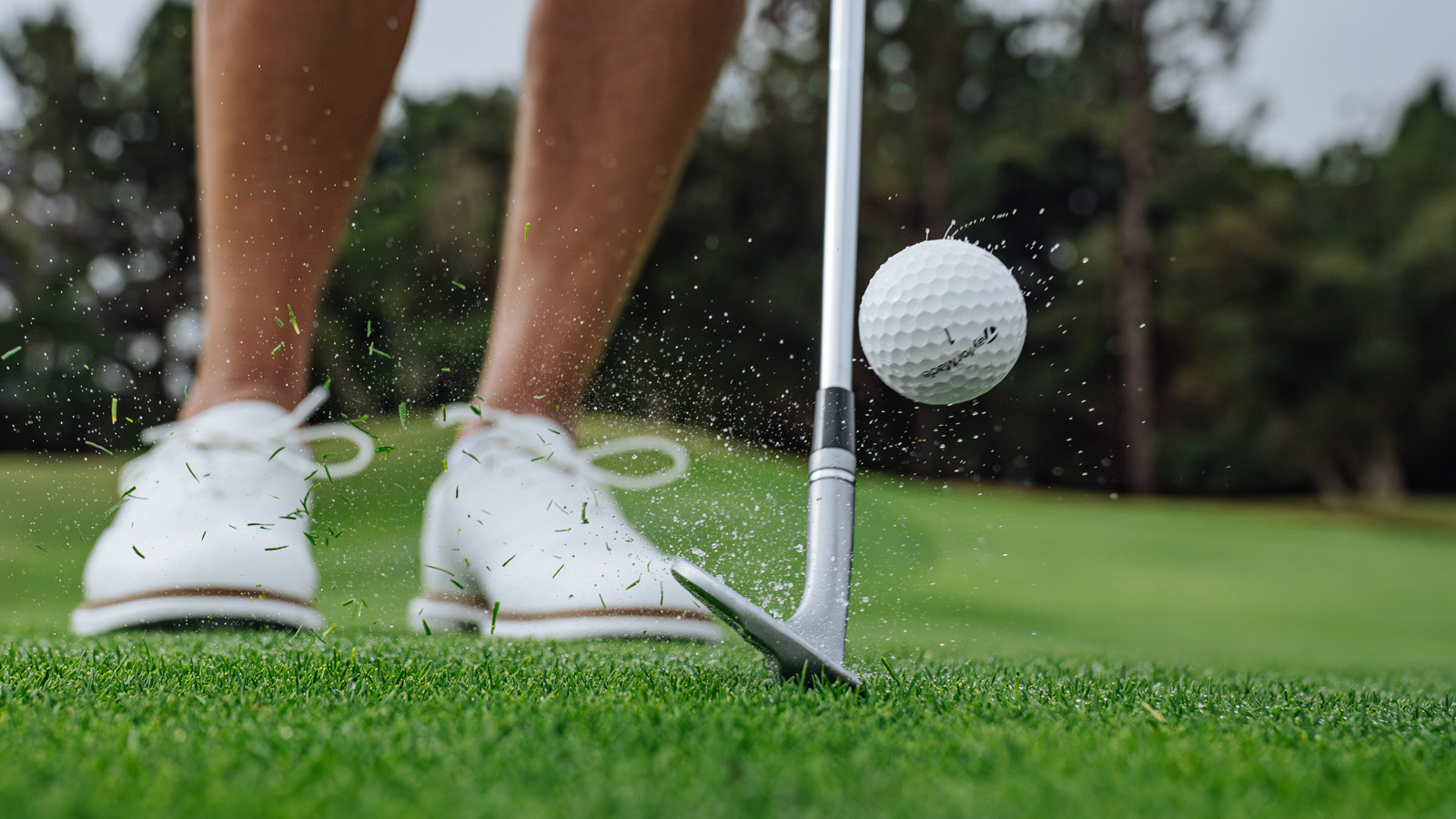
The TaylorMade MG5 wedges are offered in six grinds to help your performance no matter what conditions you play in
The higher-lofted wedges are where most golfers will tend to be their most creative. If you struggle with confidence around the greens, a wider sole with more bounce will always be your friend. If you're a more skilled golfer with good hands around the greens, you may want to consider a wedge with a more aggressive grind that facilitates a wider variety of shots. This will usually have a narrower sole that sits closer to the ground and has less bounce.
All manufacturers now offer multiple grind options, so make sure you do yourself the due diligence of researching what grinds may suit your game the best, or even better, go through a wedge fitting and let the experts show and demonstrate to you how a certain grind will suit your game better than another.
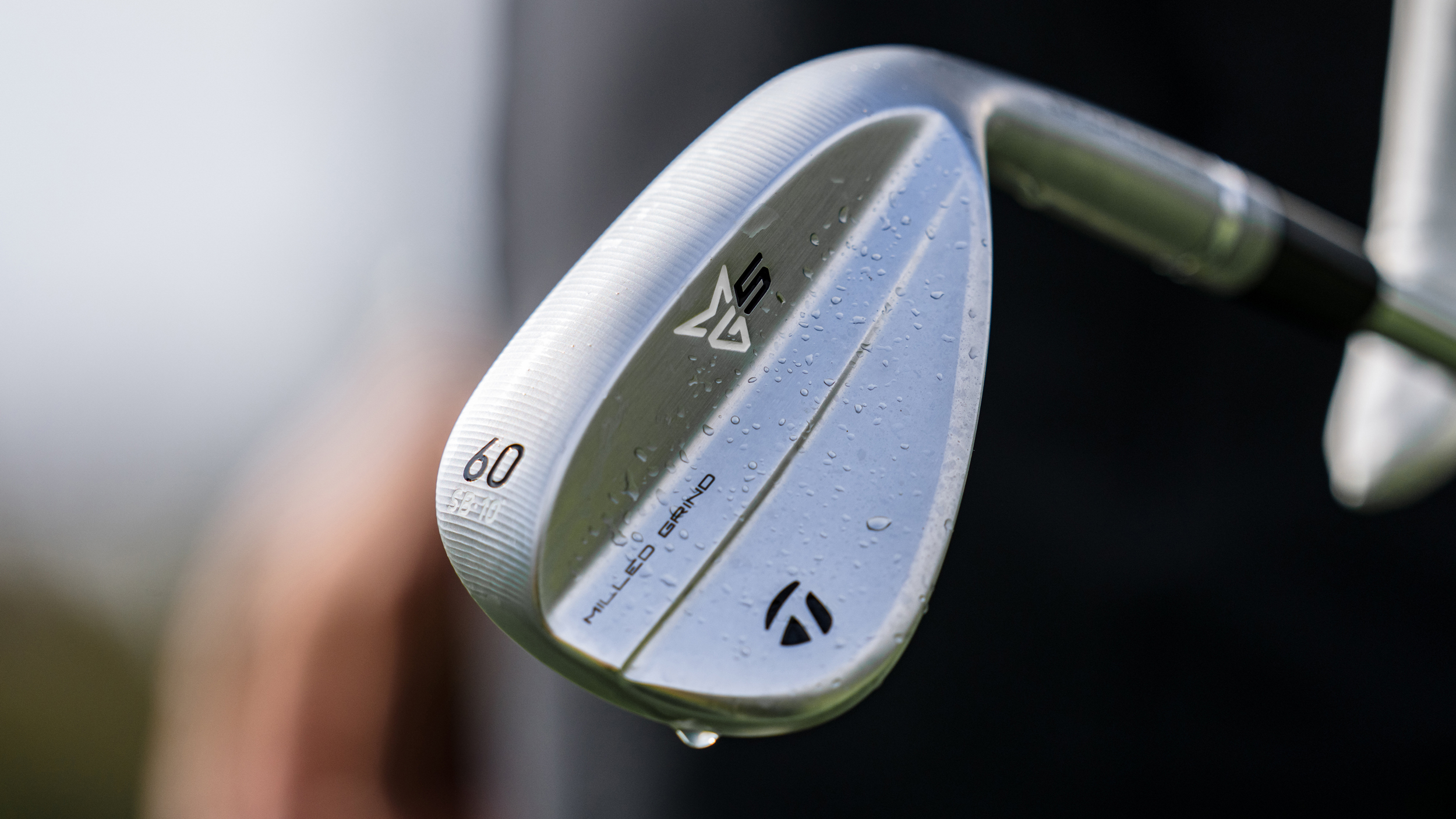
The six MG5 wedge grind options were created by master wedge craftsman Greg Cesario to fit a wide array of golfers
By understanding your swing mechanics, being thoughtful about the ground conditions you typically play on, and researching different grind options available and their characteristics, you can hopefully make an informed decision on which grinds will suit your game best and allow you to improve your performance around the greens. So, the next time you’re in the market for a wedge, remember there’s more to a wedge than just loft and bounce. Remember to pay attention to the grind - it really could be a game changer.
Subscribe to the Golf Monthly newsletter to stay up to date with all the latest tour news, equipment news, reviews, head-to-heads and buyer’s guides from our team of experienced experts.

Sam has worked in the golf industry for 14 years, offering advice on equipment to all levels of golfers. Sam heads up any content around fairway woods, hybrids, wedges, putters, golf balls and Tour gear.
Sam graduated from Webber International University in 2017 with a BSc Marketing Management degree while playing collegiate golf. His experience of playing professionally on both the EuroPro Tour and Clutch Pro Tour, alongside his golf retail history, means Sam has extensive knowledge of golf equipment and what works for different types of golfers.
-
 Rory McIlroy Warns LIV Golf Will Need Billions To Keep Going With No Unification Deal In Sight
Rory McIlroy Warns LIV Golf Will Need Billions To Keep Going With No Unification Deal In SightRory McIlroy says a unification will be "very diificult" at this stage, and warned that more billions will need to be spent on LIV Golf just to keep it going
-
 Pro Wins $300k Car But Fans Miss Out On $1 Million As It Rains Holes-In-One At The Australian PGA
Pro Wins $300k Car But Fans Miss Out On $1 Million As It Rains Holes-In-One At The Australian PGADaniel Gale won a $300,000 car for a hole-in-one at the Australian PGA Championship, where fans missed out on a $1m payout due to the timing of Kazuma Kobori also hitting an ace
-
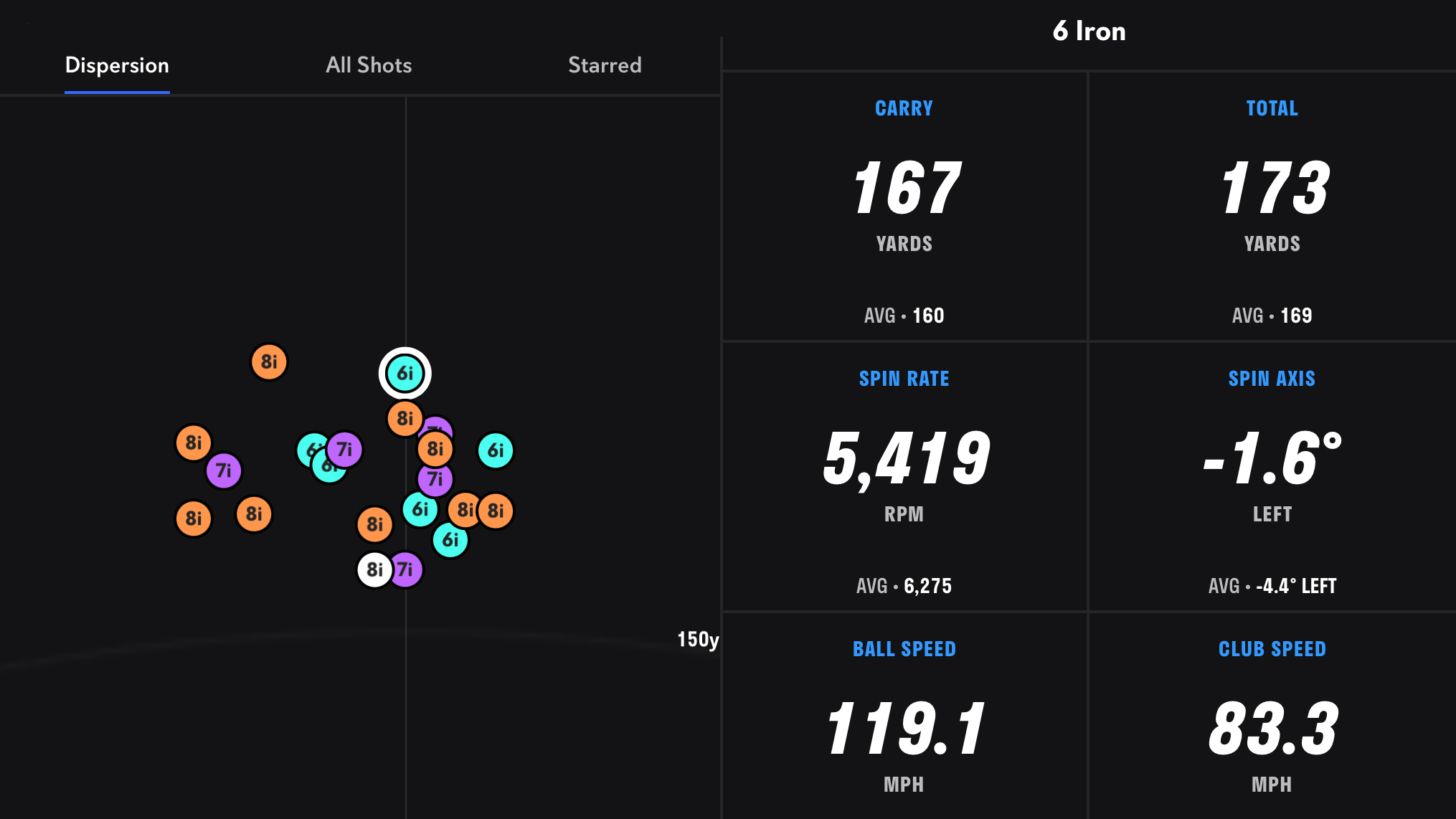 The ‘Dangerous’ Common Distance Number Golfers Should Be Wary Of
The ‘Dangerous’ Common Distance Number Golfers Should Be Wary OfAre you wrongly getting sucked into total distance numbers? If so, you're making this game more difficult for yourself than it needs to be
-
 The Equipment Debrief: New Shoes Spotted On Tour, More Brands Join The Low-Torque Party And More...
The Equipment Debrief: New Shoes Spotted On Tour, More Brands Join The Low-Torque Party And More...Another week, more new gear. If you spotted any of these, give yourself a big pat on the back...
-
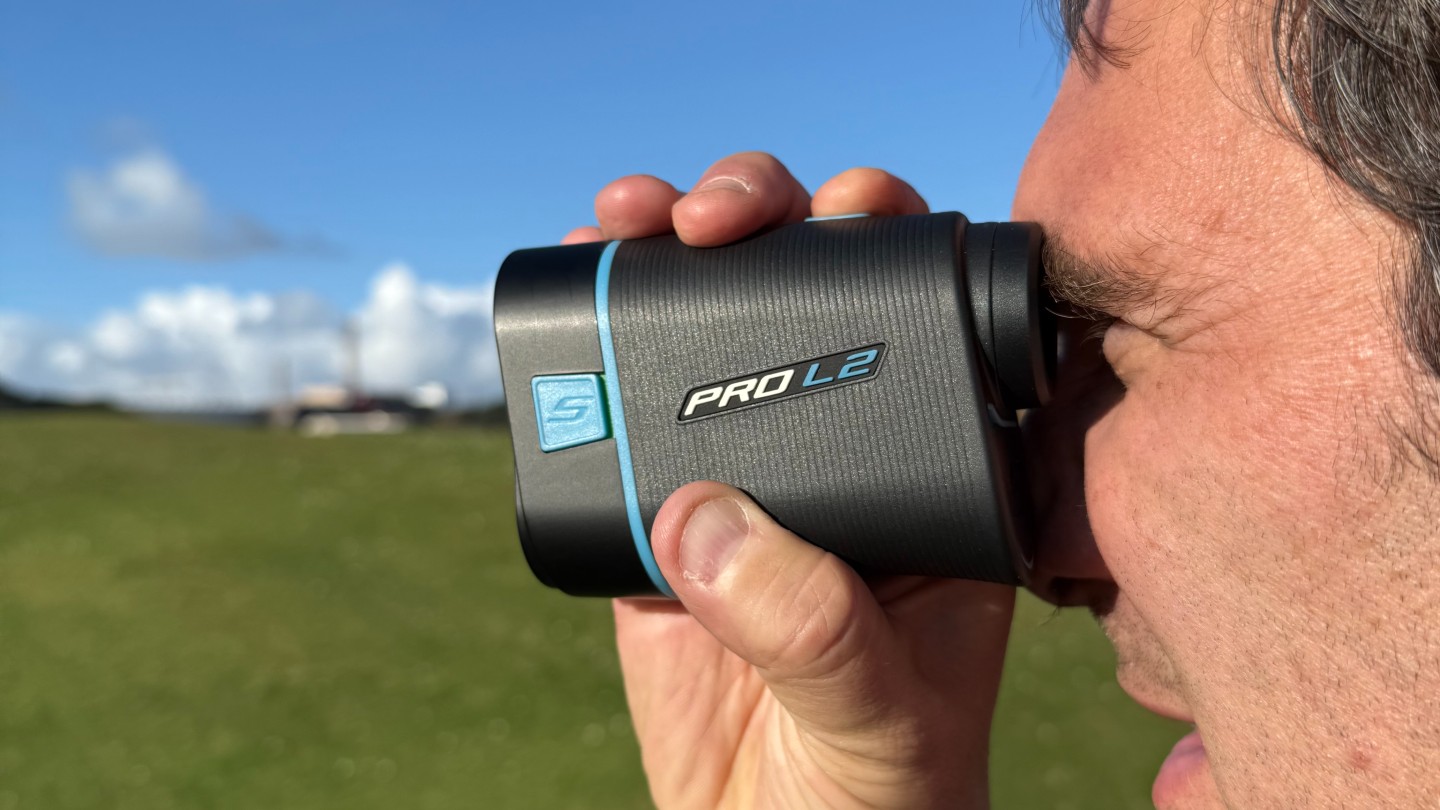 How A Budget Rangefinder Can Transform Your Game
How A Budget Rangefinder Can Transform Your GameMark Townsend has spent the year using the Shot Scope Pro L2 rangefinder and it's become an invaluable piece of equipment...
-
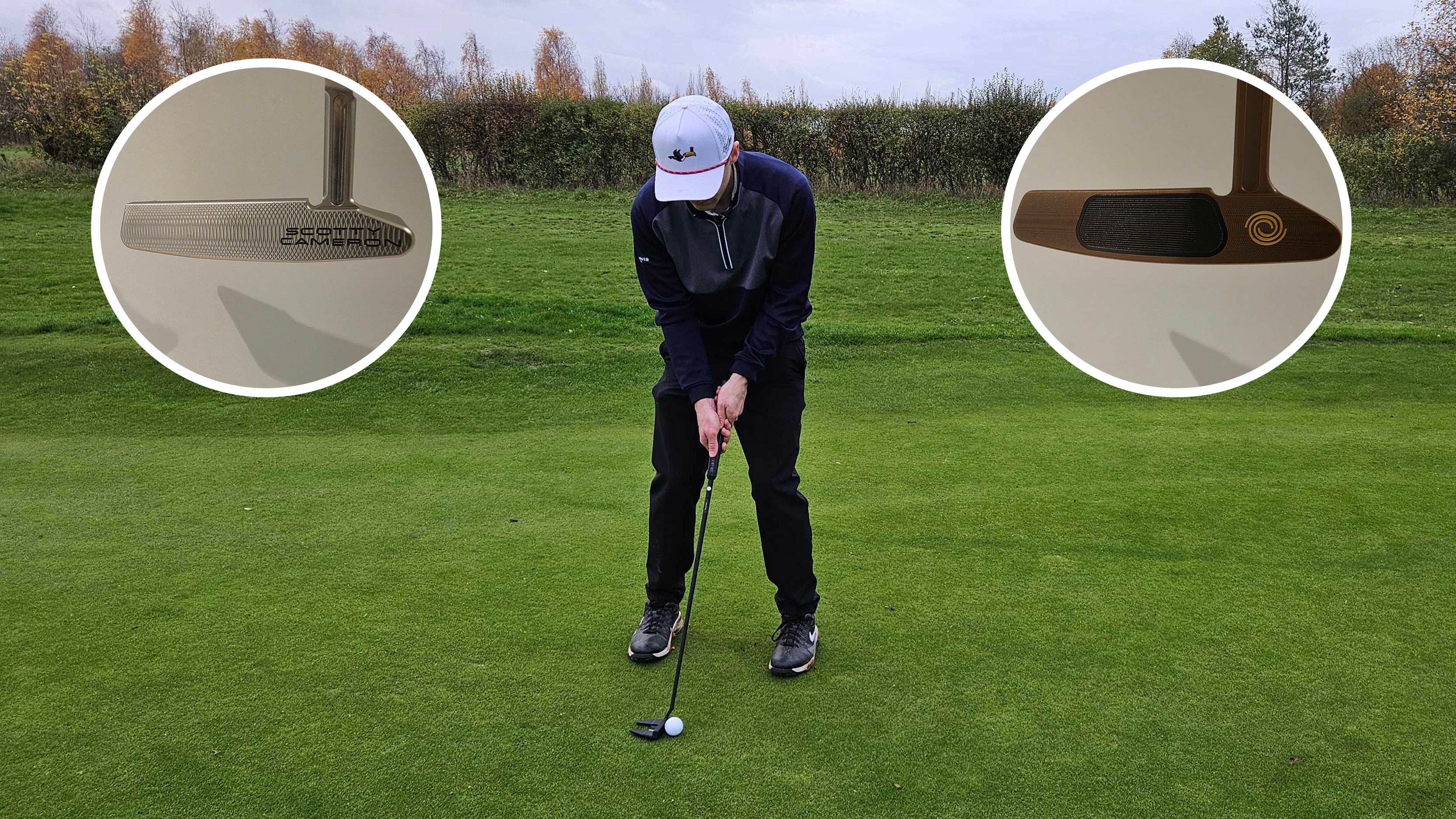 An On-Course Epiphany Led To Me Using Two Completely Different Putters... Why Don't More Amateur Golfers Do This?
An On-Course Epiphany Led To Me Using Two Completely Different Putters... Why Don't More Amateur Golfers Do This?Most amateur golfers might abandon an old putter after moving on to a new style, but I believe it is well worth keeping hold of both - here's why...
-
 Now I Know Why This Is The Best-Selling Preowned Club Of 2025
Now I Know Why This Is The Best-Selling Preowned Club Of 2025Joe Ferguson has been investigating why this particular club is still flying off the second hand shelves 18 months after its release…
-
 The Equipment Debrief: Charley Hull Spotted Making Big Gear Change
The Equipment Debrief: Charley Hull Spotted Making Big Gear ChangeAs we approach 'new gear season', more drivers yet to hit the market are spotted on tour
-
 'We Could Have Been Doing It Wrong For Years' - Why The Lie Angle On Your Irons Might Need To Change
'We Could Have Been Doing It Wrong For Years' - Why The Lie Angle On Your Irons Might Need To ChangeJoe Ferguson picks up on a 'new' lie angle theory, which has him questioning whether it's being done properly
-
 Items All Mid-Handicap Golfers Should Have In Their Golf Bags
Items All Mid-Handicap Golfers Should Have In Their Golf BagsWhat things does a golfer with a handicap index in the 10-20 range need to carry to maximise their enjoyment of a round and minimise their score?
